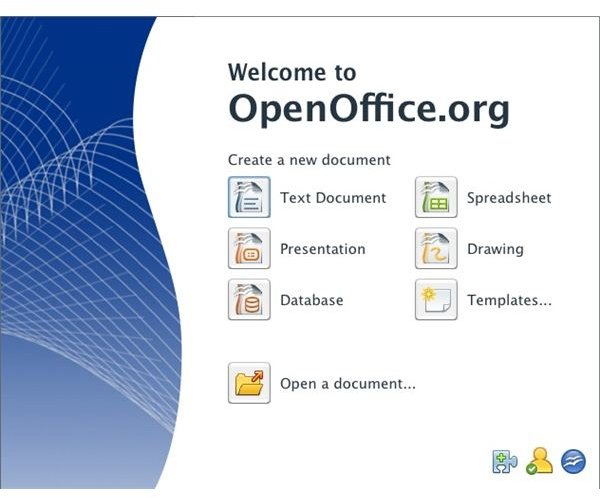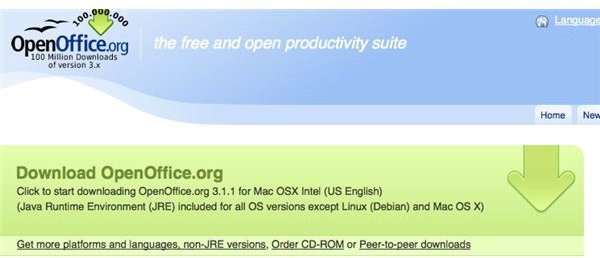Quick OpenOffice Tutorial: Learning to Use Open Office
Using OpenOffice can be a great alternative to other office suites. It is arguably one of the most comprehensive free office suites on the market. It also boosts a relatively high level of compatibility with Microsoft Office. Of course if this is your first use of Open Office you may have come up against a learning curve. That is where this piece comes in. We will look at how to do some of the basics with each of the programs in the Open Office suite, as well as some general Open Office how to’s.
Quick Install Guide
- Go to www.openoffice.org, and click on the large green button labeled “Download” to get the Open Office file.
- Open the location that you downloaded the file to.
- Double click on the installation package.
- Select the files that you want to install. If you want the whole suite then leave things as is. If you know that you will have no use for files like Base, then consider not installing them.
- Fill in the requested information, clicking on ‘Next’ to progress to the next screen.
- Read the end user license agreement and then check the box next to “I accept the terms in the license agreement” and click “Next”
- Fill in user information and click ‘Next’
- Click on “Finish” and the software should install.
Using The Program

Now that you have installed, lets talk about the individual programs in the suite. It comes with a wide variety of tools. Writer is your word processor, Calc is your spreadsheet, Impress is your presentation program, Base if your database developer, Draw is a vector image editor, and Math creates algebra style equations.
To Open an Open Office Program
-
Click on the Open Office Icon on your desktop for your target program.
-
Choose to either open a blank document, or choose a template.
-
Double click on your choice, and your document should open.
Saving Files
Saving A File with A Custom Name
- Click on “file”
- Click on “save as”
- Input a name for your file and specify the location
- Click on “Save“
Saving to A Non-Default File Format
- Click on “file”
- Click on “save as”
- Input a name for your file and specify the location
- In the pull down box, select your preferred file extension.
- Click “save”.
File Formats the Open Office Can Save to
Text documents can save to the following file formats:
- OpenOffice.org 1.x Text Document (.sxw)
- OpenOffice.org 1.x Text Document Template (.stw)
- Microsoft Word 6.0, 95, and 97/2000/XP (.doc)
- Microsoft Word 2003 XML (.xml)
- Rich Text Format (.rtf)
- StarWriter 3.0, 4.0, and 5.0 (.sdw)
- StarWriter 3.0, 4.0, and 5.0 Template (.vor)
- Text (.txt)Text Encoded (.txt)
- Unified Office Format text (.uot, .uof)
- HTML Document (OpenOffice.org Writer) (.html and .htm)
- DocBook (.xml)
- AportisDoc (Palm) (.pdb)
- [Pocket Word (.psw)](https:// http//www.brighthub.com/computing/linux/articles/46400.aspx )
Spreadsheets can save to the following formats:
- OpenOffice.org 1.x Spreadsheet (.sxc)
- OpenOffice.org 1.x Spreadsheet Template (.stc)
- Microsoft Excel 97/2000/XP (.xls and .xlw)
- Microsoft Excel 97/2000/XP Template (.xlt)
- Microsoft Excel 5.0 and 95 (.xls and .xlw)
- Microsoft Excel 2003 XML (.xml)
- Data Interchange Format (.dif)
- dBase (.dbf)SYLK (.slk)Text CSV (.csv and .txt)
- StarCalc 3.0, 4.0, and 5.0 formats (.sdc and .vor)
- Unified Office Format spreadsheet (.uos)
- HTML Document (OpenOffice.org Calc) (.html and .htm)
- Pocket Excel (.pxl)
Presentations can save to the following file formats:
- OpenOffice.org 1.x Presentation (.sxi)
- OpenOffice.org 1.x Presentation Template (.sti)
- Microsoft PowerPoint 97/2000/XP (.ppt and .pps)
- Microsoft PowerPoint 97/2000/XP Template (.pot)
- StarDraw, StarImpress (.sda, .sdd, and .vor)
- Unified Office Format presentation (.uop)
Printing Your File
To print your document try these steps.
- Open the target document
- Find the print button on the bar. It looks like a printer.
- Your document should now print.
Now, you can use Open Office as quickly and as easily as you would the office suite that you have been using the last 20 years of your life. Enjoy your new software.
Will My Computer Even Run Open Office?
Yes, as long as you meet the minimum system requirements
- Windows 2000 (Service Pack 2 or higher), Windows XP, Windows 2003, Windows Vista
- 256 Mbytes RAM (512 MB RAM recommended)
- At least 650 Mbytes available disk space for a default install (including a JRE) via download. After installation and deletion of temporary installation files, OpenOffice.org will use approximately 440 Mbytes disk space.
- 1024 x 768 or higher resolution with at least 256 colors
